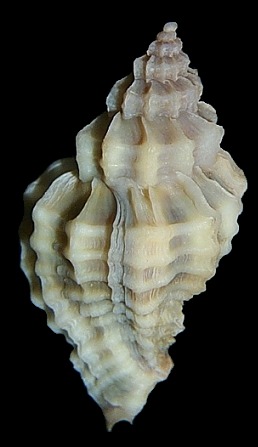 Dr.
R. Tucker Abbott in his Guide to Field Identification
Seashells of North America (1974)
and Dr. Harald Rehder in the Audubon Society Field
Guide to North American Seashells
(1981) report the Tampa Drill as found on the West central coast
of Florida. Rehder describes its habitat as "on mud flats
intertidally" and Abbott as "on mud flats and near oyster
beds." Both agree that its favorite food are the small mussels
of the genus Brachidontes. Rehder suggests that the Tampa
Drill may also prey on small oysters. Dr.
R. Tucker Abbott in his Guide to Field Identification
Seashells of North America (1974)
and Dr. Harald Rehder in the Audubon Society Field
Guide to North American Seashells
(1981) report the Tampa Drill as found on the West central coast
of Florida. Rehder describes its habitat as "on mud flats
intertidally" and Abbott as "on mud flats and near oyster
beds." Both agree that its favorite food are the small mussels
of the genus Brachidontes. Rehder suggests that the Tampa
Drill may also prey on small oysters.((hold mouse pointer
over the image to see a ventral view))
In 1995 Paula Mikkelsen
et al. published a paper in the Bulletin of Marine
Science entitled "Molluscan Biodiversity in the Indian
River Lagoon, Florida." The paper recorded mollusks collected
from the Indian River lagoonal system from 1974 to 1994. The lagoon
extends along Florida's east coast from Ponce Inlet (Volusia County)
to Jupiter Inlet (Palm Beach County). Although Mikkelsen's data
were based upon 4,503 records from 1,150 collecting stations throughout
the lagoon, no record of the Tampa Drill was found until early
1993 when I found a few small empty shells in the Banana River
in Brevard County. Within a few months of further exploration,
I had found living populations, small in number, small in specimen
size and limited in distribution. By 1995 I had identified the
limits of this sparse distribution and never found more than two
"largish" specimens. In discussions with other collectors
around Florida since then, I have encountered one other who has
found the Tampa Drill on Florida's east coast. That find was in
the Banana River.
I have collected the
Tampa Drill on Florida's west central coast and always found it
in muddy, intertidal areas among oyster beds. Alas, there are
no longer any oyster beds in the Banana River. It is not an "intertidal"
habitat since there is no open exchange of water to the ocean.
Nor are there many (if any) mud flats along shorelines due to
the extensive development. However, there is one thing that the
Banana River does have which fits with Abbott's and Rehder's observations.
The second most common molluscan species Mikkelsen reported in
the Indian River lagoon and which I found in large and pervasive
numbers in the Banana River, was the Scorched Mussel, Brachidontes
exustus (Linnaeus, 1758). The Scorched Mussel attaches to
the base of seagrasses, rocks, and any other debris in the water.
I think it can be safely concluded that the essential habitat
ingredient required by the Tampa Drill is a tasty menu of Brachidontes.
During 1998 I have briefly
reexamined some areas in the Banana River and have observed the
Tampa Drill to be plentiful and consistently larger than those
observed in 1993 to 1995. I believe the Tampa Drill (eggs, veligers
or juveniles, all of which are adapted by the intertidal environment
to survive extended direct exposure to the air and sun) was probably
transported to seafood restaurants in the Port Canaveral area
with oysters from Florida's west coast in the mid-to-late 1980's
time frame. This would be after the local commercial oyster fisheries
had died off in the 1970's. The oyster shells and other debris
transported therewith were probably, on occasion, disposed of
in the Banana River by transporters, restauranteurs, or "carryout
customers" tossing oyster shells into the river from their
boats and river-front picnic areas or backyards. Some of the Tampa
Drill "passengers," in one form or the other, survived
and multiplied. It is apparent that it is now well established
and flourishing.
The remaining questions
are "Are there enough or any predators (besides shell collectors)
in the Banana River to limit the Tampa Drills' population; and,
will the Tampa Drill eat itself to extinction or reach a sustainable
balance with the Scorched Mussel?" |